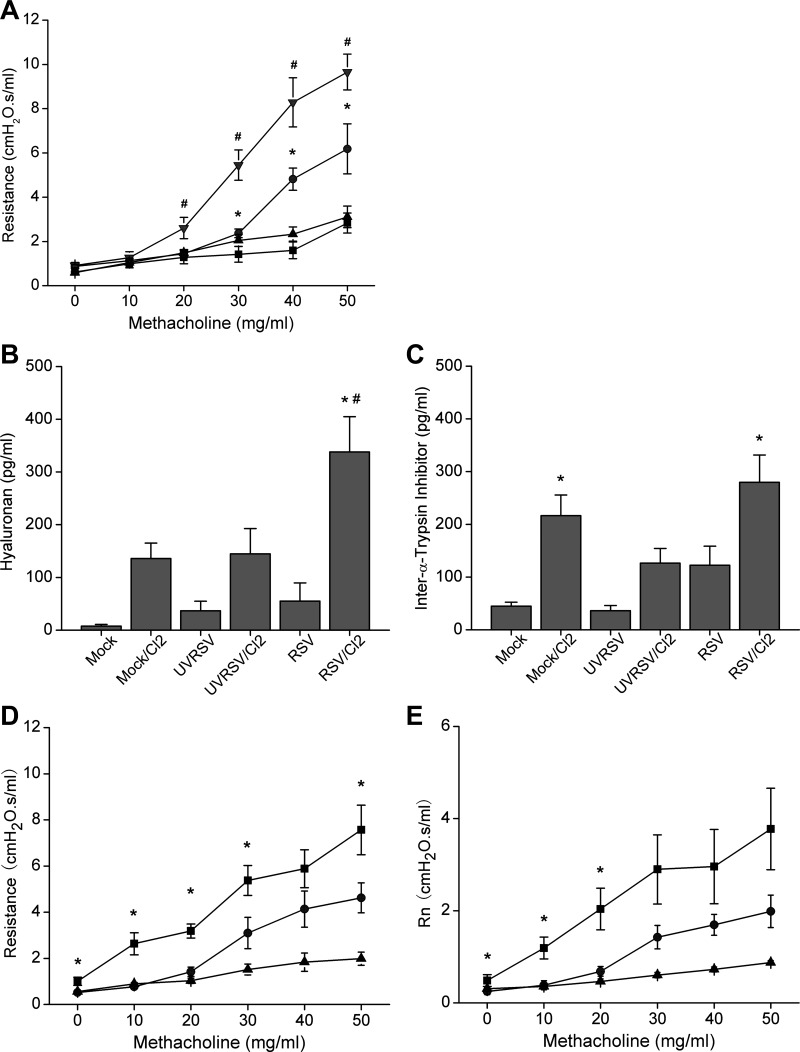Fig. 4.
Preexisting RSV infection exacerbated Cl2 exposure-induced airway hyperresponsiveness (AHR). A: mice were infected with either mock, UVRSV, or RSV and then exposed to 187 ppm Cl2 for 30 min at the 96th hour after infection. Airway resistance and responsiveness to indicated doses of methacholine challenge were measured with flexiVent at 24 h after Cl2 exposure (i.e., 5th day after infection). Control animals for Cl2 exposure were kept in room air only (■, mock/air; ▲, RSV/air; ● mock/Cl2; ▼, RSV/Cl2; data are means ± 1 SE; *P < 0.05 compared with mock/air and RSV/air groups at the same dose of methacholine; #P < 0.05 compared with all other groups; n = 6/group). B and C: RSV infection and Cl2 exposure synergistically upregulated hyaluronan (HA) in BALF. Concentrations of HA (B) and inter-α-trypsin inhibitor (IαI) (C) in the BALF were measured in cell-free BALF as described (19, 20) (data are means ± 1 SE; *P < 0.05 compared with RSV group; #P < 0.05 compared with all other groups; n = 5 for UVRSV and UVRSV/Cl2 groups, n = 10 for all other groups). D and E: IαI antibody reversed RSV/Cl2-induced AHR. RSV-infected and Cl2-exposed mice were treated twice with endotracheal administration of IαI antibody, at 1 h and 23 h after Cl2 exposure. Airway resistance and responsiveness to methacholine challenge were measured at 24 h after Cl2 exposure. Control animals received saline only. D: total resistance. E: Newtonian resistance (Rn) (■, RSV/Cl2/saline; ●, RSV/Cl2/IαI Ab; ▲, air control; data are means ± 1 SE; *P < 0.05 compared with RSV/Cl2/IαI Ab group at the same dose of methacholine; n = 6/group).

